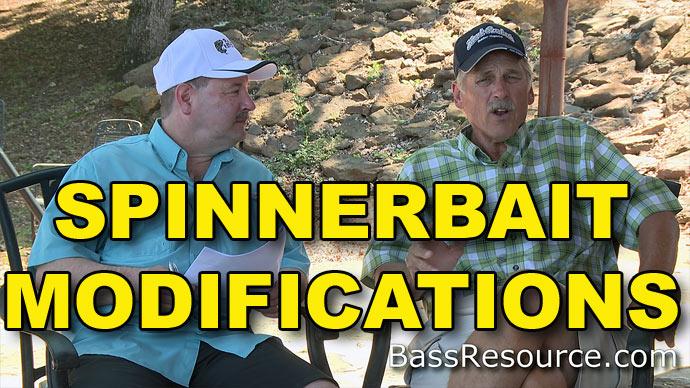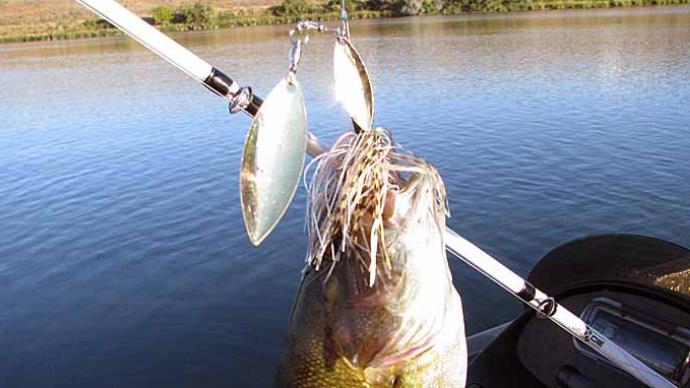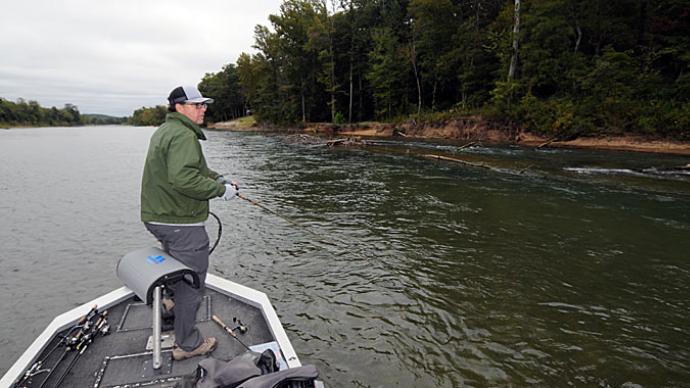
The spinnerbait may have taken a backseat to baits like the ChatterBait and swimbait in recent years, but it's still a dynamite fish catcher that has proven itself for decades. Bassmaster Elite Series pro Mark Menendez keeps them in his arsenal today, just like he did years ago because he knows they catch plenty of fish and have a knack for catching big ones. While they work throughout the seasons, late summer and deep into the fall can be some of the best times to get in on the action.
Late in the season, Menendez likes to fish them fast, burning them as quickly as he can. This approach is deadly for smallmouth but works just as well for largemouth bass, with a few minor changes. His approach is to find the most productive areas and fish them quickly in search of the most aggressive fish.
Where to Burn
Fishing a spinnerbait this way is generally a shallow water approach, and Menendez looks for areas where bass can congregate to search for food.
"For all bass species, some of the best places are flats with deep water access close by; you have to have that step up from deeper water," he said. "Largemouth like to set up, grab a bite, and then head back to deeper water. Smallmouths will roam that break line. It could also be grass line, sand changing to rock, a natural rock vein, just something to relate to."
One more critical component, according to Menendez, is current or wind. "Having the moving water hitting the geometric face of rock or flat is the key," he said. "Wind must be prevalent for this to work nine times out of ten. It positions the fish in predictable areas and helps to break up the surface."
When to Burn
While this way of fishing a spinnerbait might work other times of the year, Menendez says there is a perfect window.
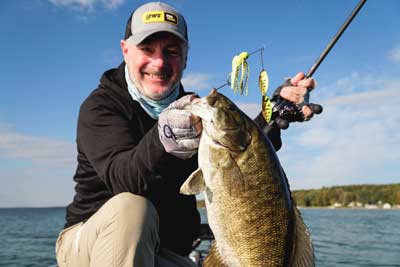
"My favorite time to do it is when the water hits 63 degrees in the fall, and it works great until the water drops down about ten degrees to around 53 degrees," he said. "It will still work outside that window, but that's when it seems to outperform other lures."
One more piece of advice from the veteran pro is to choose the right water conditions as it won't work as well in stained or dirty water, in his experience.
"The other key is water clarity, and I believe you need to have a minimum visibility of 2 feet, and the cleaner, the better," he said. "My theory is that fish can see three to five times further than we can, so do the math; the clearer the water, the further they can see your bait and come get it. Smallmouth are notorious for coming a long way to eat a bait, and I've seen it on Lake St. Clair in Michigan where a fish is following a bait flying through the air to get it when it lands."
Menendez says this time of year is when many fish are shallow, looking to feed, and he spends his time plying the shallow cover. "There are times when they will come up and get it from the depths, but generally, I'm fishing the 4 to the 7-foot range for the fish coming off the break to feed," he added.
Picking the Right Spinnerbait
Any spinnerbait can be fished quickly and catch fish with this approach, but efficiency is critical. That includes longer casting distances and the ability to move the bait quickly.
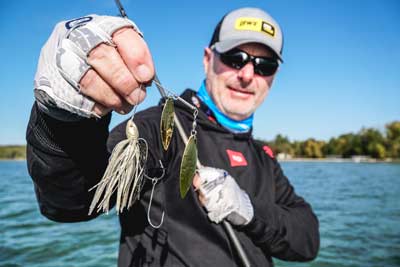
"I want that bait moving as fast as I can without breaking the surface," he said. "Having blades with less resistance like the Strike King Burner with the thin Raz-R-Blades allows you to fish a bait faster," he said. "I'll also use the Strike King Tour Grade with double willow blades. It will always be at least a ½-ounce bait for smallmouth, but I'll go up to a ¾-ounce if I want to launch it out there. I use more 1/4 and 3/8-ounce spinnerbaits for largemouth because they have smaller blades, and largemouth seem to like the smaller bait. It doesn't make sense, but that's how it usually works out for me."
For skirt color, Menendez likes bright and gaudy for smallmouth and more natural hues for largemouth bass.
"I use a lot of golds and chartreuse for smallmouth and often use painted blades to add even more color," he said. "For largemouth, translucent skirts and colors like blue shad and golden shiner work best for me. I try to mix it up with blade colors and usually have one gold and one silver."
One more tip is always utilize a trailer hook, especially when fishing for smallmouth. "They are necessary because fish tend to slap at a spinnerbait," he said. "I'll even add two of them if they are still missing the bait."
Burning Gear
Because of the violent strikes from burning a spinnerbait, Menendez opts for a forgiving crankbait rod, fast reel, and beefy line.
"I've played with several different rod types and prefer a composite cranking rod like the Lew's 7-foot, 6-inch 5XD rod because its length lets you make those long casts," he said. "It has a parabolic action and enough power to get a better hookset when a fish eats your bait a long way out."
He prefers a 9.5:1 Lew's HyperSpeed or 8.3:1 HyperMag, spooled with between 17 and 20-pound Seaguar InvizX fluorocarbon. "The heavier line helps with big fish, but more importantly, it keeps your bait higher up in the water column."
According to Mark Menendez, speed kills when fishing a spinnerbait in the fall. However, by fishing fast and covering ground, you can tap into the instincts of hungry bass looking to feed up for winter and have some exciting action and rod-jarring bites.
BassResource may receive a portion of revenues if you make a purchase using a link above.


